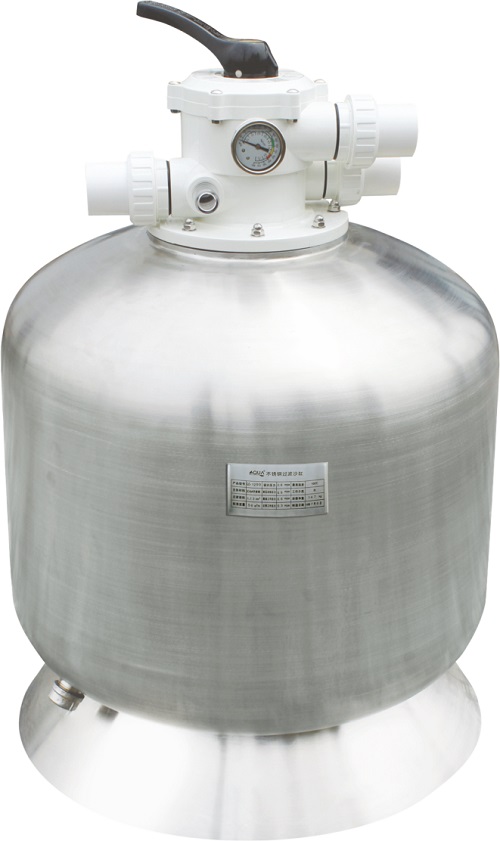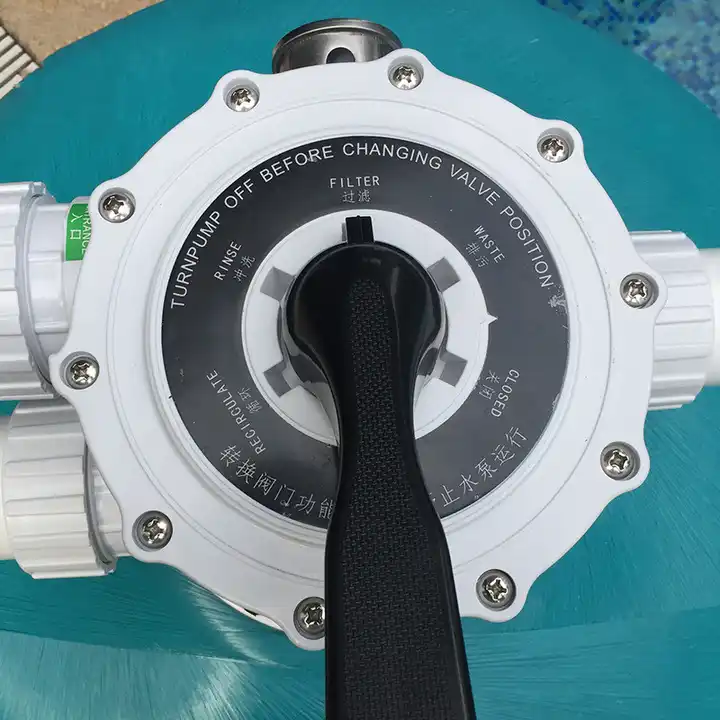In order to maintain the cleanliness and clarity of your swimming pool water, choosing the right filter is crucial. The swimming pool filter sand tank is the central filtration device in the system, and its selection directly impacts water quality and the overall swimming experience. This article will delve into how to scientifically and rationally choose a swimming pool sand filter tank to ensure the best quality of pool water.
Basis for selection of swimming pool sand filter tank

When selecting a swimming pool, two key parameters need detailed consideration: pool water capacity and circulation flow. Firstly, pool volume (V) is calculated by multiplying the pool’s length, width, and average depth. Secondly, the circulation flow rate (Q) is determined by multiplying the pool water capacity by 1.05 and dividing by the circulation period (4 hours). The following is a detailed expansion:
Pool Water Capacity Calculation
The formula for pool water capacity (V) is the basis for swimming pool selection: V=length×width×average depth.
Circulation Flow Calculation
Circulation flow (Q) refers to the flow of filtered pool water during the circulation cycle to ensure clean water quality.
Selecting Filter Equipment
To achieve suitable filtration effects, appropriate filtration equipment needs selection based on actual needs. Taking the medium-speed filtration speed (25 meters/hour) as an example, four sand tanks with a diameter of 1400 mm can be chosen for filtration according to the actual situation.
It is essential to note that filtration speed is divided into low-speed, medium-speed, and high-speed filtration. The value of the filtration speed must comply with specifications: low speed ≤ 10 m/h, medium speed 11-30 m/h, and high speed 31-50 meters/hour.
Importance of Filtration Speed
Test results indicate that the filtration rate significantly affects efficiency and filter pressure loss. Filtration efficiency increases between 10 and 25 m per hour. When the speed exceeds 25 m/h, the filtration effect drops sharply. Therefore, to ensure that filtered water quality meets hygiene standards, the filtration speed of public swimming pools must be kept below 25 meters.
After careful selection, not only can water quality be maintained, but also a comfortable and safe swimming environment can be provided for swimmers.
Sand Cylinder Head and Multi-function Valve
Sand Cylinder Head Interface Installation Method
To facilitate user memory, the installation of several interfaces on the head of the sand cylinder has a simple and easy-to-understand slogan: top in, bottom out, side drainage. This means that the upper connection is the water inlet, the lower connection is the water outlet, and the side connection is for drainage.

The Six Position Functions and Operation Methods of the Multi-way Valve
FILTER : Press down the handle on the cylinder head controller and push it to (FILTER) for normal filtration. Start the water pump to achieve normal circulation filtration.
BACKWASH : In this position, by turning off the water pump, opening the multi-way valve to the “backwash” position, and starting the water pump for about 3 minutes, clean the sand cylinder and remove caked impurities.
RECIRCULATE : Controls the flow of water from the pump directly to the pool water without passing it through the inside of the filter.
WASTE : Used to drain swimming pool water. Place the multi-directional valve in the WASTE drain position, open the drain valve, start the water pump, and drain the pool water.
RINSE : After backwashing, before returning the multi-way valve to the normal filtration position of FILTER, place the multi-way valve in the RINSE rinsing position to prevent muddy water from entering the pool.
CLOSED (Closing): Used to close the flow of water from the filter to the water pump, usually used when the water pump hair collector is opened.
Things to Note When Using Swimming Pool Sand Tanks
- When turning the handle of the cylinder head control valve, be sure to depress the control valve handle to prevent damage to the seal of the control valve.
- When turning the control valve, the water pump must be turned off to ensure safe operation.
- Avoid allowing the working pressure of the sand filter tank to be higher than 35 kilopascals (kPa).
- Clean the hair collector regularly to ensure the filtering effect.
- Ensure that all pipe connections are firm and reliable to prevent water leakage.
Therefore, choosing a suitable swimming pool sand filter tank is an important part of ensuring swimming pool water quality. A suitable sand filter tank can effectively remove impurities in the pool water, keep the water clear and transparent, and provide a healthy living environment for swimmers. When choosing a sand filter tank, you should consider the pool water capacity, filtration rate, and material to determine the filter equipment that suits the actual needs of the swimming pool. By choosing a swimming pool, you can lay a good foundation for the normal operation and maintenance of the swimming pool, and create a pleasant and fresh water world for swimming enthusiasts.